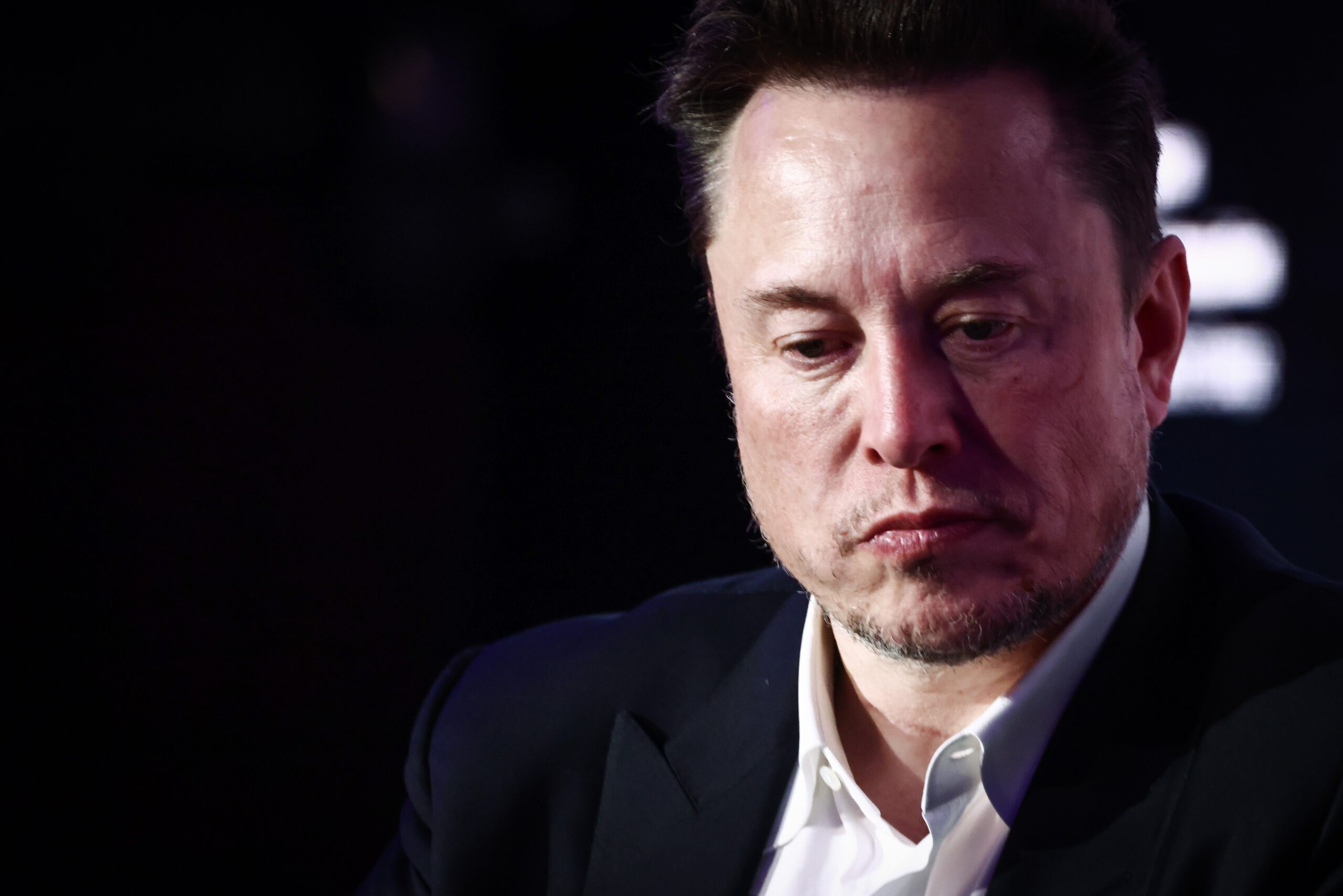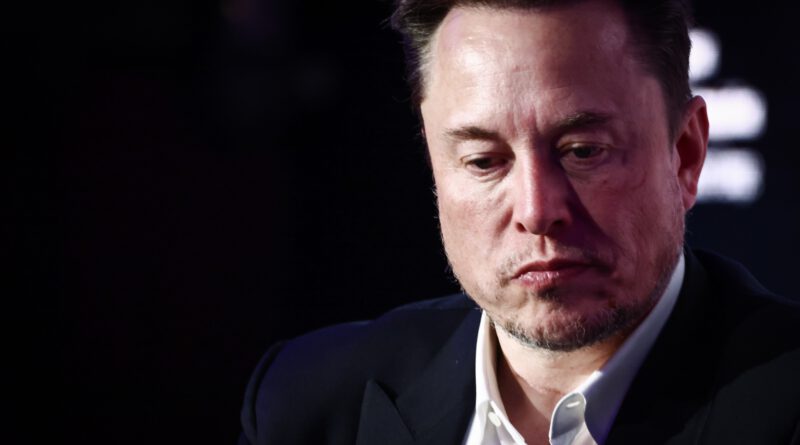The majority of traffic from Elon Musk’s X was fake during the Super Bowl, data suggests

This week, Super Bowl 2024 shattered records, with the NFL championship broadcast on CBS becoming the most-watched televised event in U.S. history.
Also riding high from the big game? Elon Musk’s X. The company formerly known as Twitter published its own press release, lauding Super Bowl LVIII as one of the biggest events ever on the social media platform with more than 10 billion impressions and over 1 billion video views.
However, it appears that a significant portion of that traffic on X could be fake, according to data provided to Mashable by CHEQ, a leading cybersecurity firm that tracks bots and fake users.
According to CHEQ, a whopping 75.85 percent of traffic from X to its advertising clients’ websites during the weekend of the Super Bowl was fake.
“I’ve never seen anything even remotely close to 50 percent, not to mention 76 percent,” CHEQ founder and CEO Guy Tytunovich told Mashable regarding X’s fake traffic data. “I’m amazed…I’ve never, ever, ever, ever seen anything even remotely close.”
CHEQ’s data for this report is based on 144,000 visits to its clients’ sites that came from X during Super Bowl weekend, from Friday, Feb. 9 up until the end of Super Bowl Sunday on Feb. 11. The data was collected from across CHEQ’s 15,000 total clients. It’s a small portion of the relevant data, and it’s not scientifically sampled, but it nonetheless suggests a dramatic trend.
CHEQ monitors bots and fake users across the internet in order to minimize online ad fraud for its clients. Tytunovich’s company accomplishes this by tracking how visitors from different sources, such as X, interact with a client’s page after they click one of their links. The company can also tell when a bot is passing itself off as a real user, such as when a fraudulent user is faking what type of operating system they are using to view a website.
Most X users who are regularly on the platform can attest to a noticeable uptick in seemingly inauthentic activity in recent months. When a post goes viral on X, its now commonplace to find bots filling the replies with AI-generated responses or accounts with randomly generated usernames spamming a user’s mentions with unsolicited “link-in-bio” promotions. Now, there’s data which backs up that user experience.
Advertisers have also noticed X’s bot issues. In a recently published piece in The Guardian, Gene Marks, a small business owner shared his ad campaign results from X. After a small $ 50 advertising spend, X’s analytics shows that his website had received 350 clicks from approximately 29,000 views. However, according to Google Analytics, X wasn’t the source of any of the actual traffic his website had received during that time period.
In our conversation with Tytunovich, he referenced an often cited stat that roughly half of all internet traffic is made up of bots, and how he’s long been skeptical of that data based on what CHEQ itself sees.
“We were always the conservative ones,” Tytunovich explained regarding CHEQ’s approach to fake user data. “We protect a lot of our customers on Google Ads, YouTube, and even TikTok, which I’m not a fan of, and we’ve always said 50 percent [being fake] is a bit opportunistic.”
“I almost decided not to go out [and publish the X bot data] because we’ve never seen anything like it,” he said.
X has a bot problem unlike anything else seen on competing platforms
When X’s Super Bowl traffic is compared to other social media platforms during the same time period, the bot issue on Musk’s platform appears even more stark. CHEQ also provided data to Mashable pertaining to Facebook, Instagram, and TikTok. In terms of fake traffic, no other platform came close to X’s nearly 76 percent.
Out of more than 40 million visits from TikTok, only 2.56 percent were determined to be fake. Facebook sent 8.1 million visits and 2.01 percent of the monitored visits were classified as inauthentic. And over on Instagram, only 0.73 percent of the 68,700 visits from the platform were fake.
Tytunovich tells Mashable that it’s not out of the ordinary to see spikes in fake traffic on social media platforms during big events like U.S. elections. However, he has never seen anything close to X’s 75.85 percent.
And, unfortunately for X, its bot problem goes beyond the big game too.
CHEQ also provided Mashable with fake traffic data from the entire month of January 2024. TikTok, Facebook, and Instagram all had very similar stats to each platform’s respective Super Bowl weekend numbers. Slightly more than 2.8 percent of the 306 million visits sent from TikTok were determined to be fake. Out of the 90 million visits that came from Facebook, a bit more than 2 percent were fake. And Instagram’s traffic was only 0.96 percent fake, based on 749,000 visits.
But, X once again fared the worst. Of the 759,000 visits from X, 31.82 percent of that traffic was determined to be fake.
Tytunovich, who has met with Musk previously and pushed the X owner to address the bot problem, stressed to Mashable that his company cannot tell how many fake users are on social media platforms themselves. The data only details how many bots came to CHEQ’s clients’ sites from those platforms.
However, as Tytunovich explained, his company has a wide range of clients, including large, Fortune 500 companies, and this fake activity coming from X was seen across the board regardless of industry or market.
Mashable reached out to X for information or a statement but received an automated message from the company reading “Busy now, please check back later.”
An Elon Musk problem
X didn’t always have a bot problem of this magnitude, according to CHEQ, something Tytunovich demonstrated by providing Mashable with data from last year’s Super Bowl. During the comparable weekend in February 2023, fake traffic from the platform then-known as Twitter only accounted for 2.81 percent out of 159,000 visits. That’s around 72 percent less than this year’s game.
Last year’s Super Bowl occurred just a few months after Elon Musk acquired the platform in late October of 2022. And a lot has changed on X between last February and today under Musk’s leadership. The platform was still known as Twitter then. Notable users still had their legacy verified blue checkmarks. Only around 200,000 to 300,000 users were subscribed to Twitter Blue, which is now called X Premium. X’s creator monetization program, where paying X Premium subscribers can make money off of ads displaying on their content, did not yet exist. All of these changes can factor into X’s current bot problem.
In addition, since Musk’s take over, 80 percent of the company’s Trust and Safety team’s engineers have been laid off, along with half of the company’s content moderators. Thousands of employees have been laid off across the company.
X has struggled with advertisers since Musk’s takeover. Big brands and major companies like Disney have suspended ad campaigns on the platform due to hate speech and pro-Nazi content proliferating on X, as well as antisemitic comments made by Musk himself. According to a Bloomberg report last month, X is planning to open a Trust and Safety center in Austin, Texas and is hiring 100 employees to work in that department in order to address some of advertisers’ concerns.
But, X’s problems clearly go well beyond the type of content being posted by real human beings. Advertisers typically pay social media companies based on impressions and/or clicks on their advertisements. And based on this traffic data, advertisers could potentially be paying Musk and company for visits from an audience consisting mostly of bots.


